Share
Medical Matters: A journey to anti-racism advocate
Back to MessengerRead time: 3 minutes
By CPSA Councillor Dr. Daisy Fung
Under legislation, CPSA’s mandate is to protect the public and ensure regulated members provide safe, high-quality care to patients across the province. I’ve heard some physician colleagues say that CPSA should “stay in its lane” when it comes to anti-racism initiatives. That these issues are not the regulator’s responsibility. However, racism and discrimination lead to adverse health outcomes, as well as more obvious and immediate patient harms, making anti-racism work a key aspect of providing safe care. Anti-racism work, therefore, is CPSA’s work.
| What I’ve learned:
Humility: We can be a good person and a good physician while still making mistakes, as we are also human. Listening with curiosity and empathy: A shared understanding and validation of a patient’s experience (the impact of our words and actions, even if intent was different) is key to starting the work and approaching each instance. Lifelong learning and self-reflection: Being anti-racist is not an end goal but constant work and improvement, just like any other continuing competency or quality improvement project. And just like science, there is much unlearning and new understanding as we, and society, take steps towards the same mission: doing better for others. |
My road to becoming a stronger advocate in this area began in my childhood. I am the daughter of two immigrant parents and grew up on a farm in rural Alberta. I watched, and was also the subject of, racism before I even started grade school. I was told women should remain uneducated, should be silent and subservient. I was told that I would fail because I was a woman, and one of colour at that.
I did as I was told, remaining relatively silent throughout my childhood and well into my university years. However, as I watched more of what was happening locally and globally—and with the medical background to help me—I felt compelled to speak up: it was no longer just about me. Around this time, I also learned the importance of self-reflection. I started to recognize that, not only was I making mistakes, but I was also inadvertently hurting others. This is when I learned that impact is not the same as intent. In other words, even though I didn’t mean to hurt someone, I did, and it was my responsibility to improve so it didn’t happen again.
Being and doing better for patients, while supporting my colleagues to do the same, motivated me to run for CPSA Council. I also wanted to learn how to be anti-racist and apply those learnings in a professional setting. I was elected by my physician colleagues and, for the next several years, found myself surrounded by others with the same goal. Watching CPSA’s 2022-2026 Strategic Plan take shape with a new direction towards becoming an anti-racist organization and seeing the Anti-Racism and Anti-Discrimination Action Advisory Committee (ARADAAC) come to life gave me further incentive to continue this work.
Anti-racism work is both immensely important and incredibly challenging. This daunting feeling can make it difficult to begin, but starting with curiosity and taking small steps are great ways to create momentum. Listening and learning are key to this work; in fact, CPSBC includes it as part of their Practice Standard on Indigenous Cultural Safety, Cultural Humility and Anti-racism.
| Resources to get started: |
CPSA has begun developing a repository of resources, including a dedicated section for equity in health care on our website. As the Chair of ARADAAC, I was fortunate to participate in the development of a Micro-Aggression training course for physicians, as part of a partnership between CPSA, the Alberta Medical Association and Alberta Health Services. With a goal of positioning Alberta’s physicians as leaders in addressing racism in healthcare settings, this course helps CPSA regulated members understand what micro-aggressions are, how to recognize them, why they are harmful, and how to respond. I also had the privilege of helping CPSA develop their Anti-Racism position statement, as well as an Advice to the Profession document dedicated to anti-racism and anti-discrimination. While I am appreciative of the opportunity to contribute, I would like to emphasize that I am still in the infancy of my own learning, and constantly searching for recommendations from the groups who deserve better from me and our profession.
We are all here for the same reason: to help others and make the world a better place for those who come after us. Anti-racism work has the same goal, and we must start now, with genuine learning and unlearning, listening, and great humility. Anti-racism work, in essence, is no different than anything else we strive for in this profession.
 |
Dr. Daisy Fung (she/her) is a mom of 4 small kids, 2 dogs, and a cat, and grew up on a farm in rural Alberta. She is currently a community family physician working in Edmonton providing comprehensive longitudinal care to a panel of patients. She is also a teacher to medical students and residents in a variety of settings through the Department of Family Medicine at the University of Alberta. Dr. Fung has been a member of CPSA Council since 2020, and Chair of CPSA’s Anti-Racism Anti-Discrimination Action Advisory Committee since 2023. |

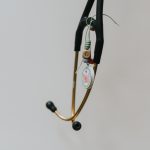

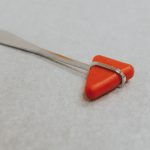







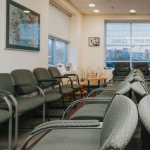


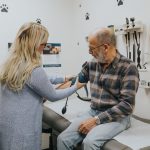



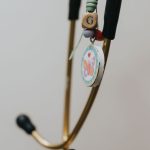

Thank you for the helpful introduction. I thought the 3 min read was a target to scan the material, and so, I particularly like the resources to “get started”.
Thank you for your feedback. We’re glad to hear the resources are valuable!
What about racism against healthcare professionals?
This happens, I believe way more often than the converse.
Just today in our specialist clinic, one of our nurse practitioners experienced disgusting racism against her.
Where is the accountability for patients being racist towards healthcare providers?
Thank you for taking the time to read The Messenger. We’re sorry to hear about the racism your nurse practitioner experienced. Just as patients deserve safe care spaces, all healthcare providers are entitled to safe workplaces and interactions. We encourage you to refer to standards of practice, professional guidelines and/or workplaces policies to find out how you can best support your team.
As outlined in CPSA’s anti-racism guidelines, regulated members are not expected to put up with racist or discriminatory practices, behaviours or attitudes from patients or their families/caregivers. If the patient poses a safety risk or is abusive, a regulated member may consider immediately ending the treating relationship. The patient may be discharged in accordance with the Terminating the Physician-Patient Relationship standard of practice.
Thanks again and take care.
Many thanks, Dr. Fung, for your lovely and heart felt comments. Truly inspiring! M Churcher
Thank you for taking the time to read and provide feedback! We’ve shared your comment with Dr. Fung.
In my location as a commumity physician I have detected that many visible minority patients show in their faces an initial anxiety when I first meet them. Thinking about this concern I tried to fix this issue in my little medical patch. I collected a few pleasant photos of myself overseas, socializing with various nationalities As I worked. It really seemed to help them relax, especially the children. It also initiated a few questions as to why I was in Batallion Engineers khaki uniform with a stethescope slung around my neck! We must all contribute toward improving this situation.
Thank you for reading and sharing one of your strategies to put patients at ease and initiate conversations in your practice. You’re absolutely correct in that we all have a role to play in creating safe and equitable care spaces.